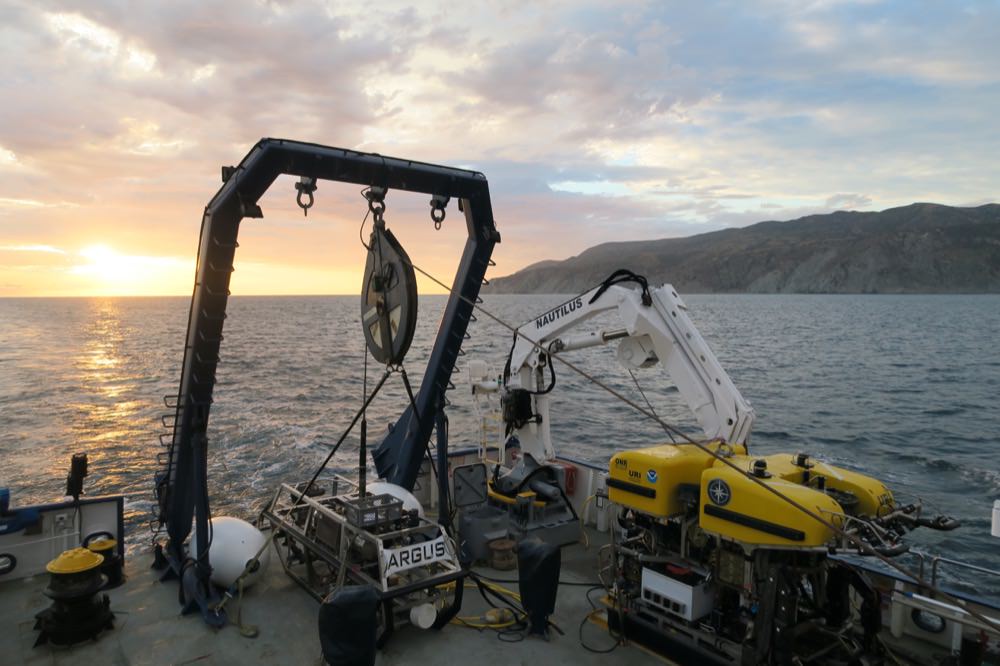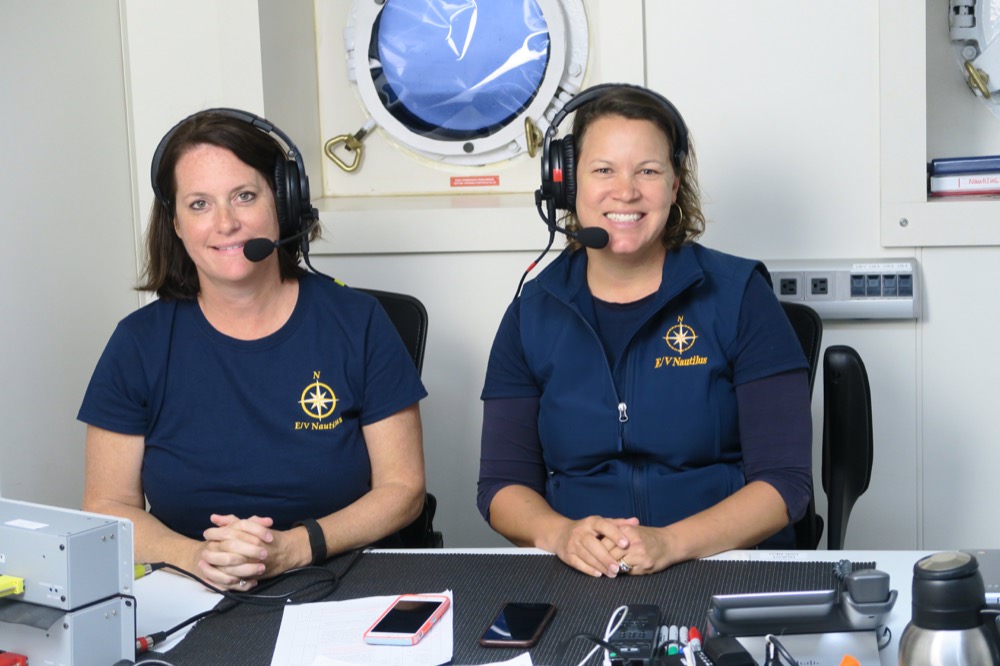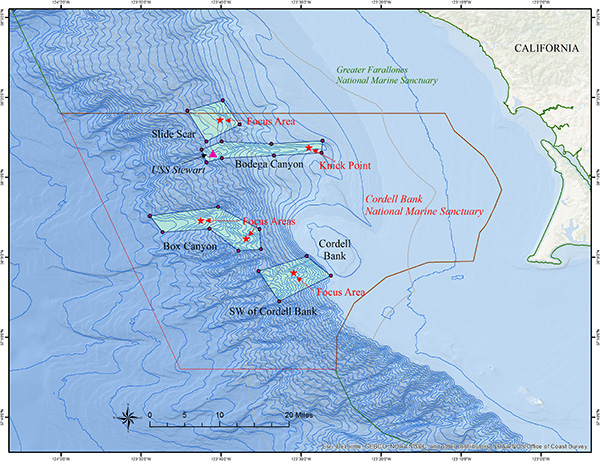Telecasts beam sanctuary visitors into deep sea exploration
By Juliette Lee
August 2017
Wish you could be aboard a marine research vessel exploring the unknown depths of the ocean? Now you can join researchers aboard the E/V Nautilus in real time to explore Cordell Bank National Marine Sanctuary. The mysteries of the deep sea will be brought to light in select venues on August 12 during Get Into Your Sanctuary Day -- so don't miss out!
Nautilus is on a global mission of deep sea exploration. NOAA's Office of National Marine Sanctuaries is teaming up with Ocean Exploration Trust to explore the marine ecosystems of the West Coast, including five national marine sanctuaries.
The E/V Nautilus is equipped with telepresence capabilities, which allows scientists -- and the public -- from around the world to participate and contribute to the success of this mission. This August, researchers aboard Nautilus turn their focus to Cordell Bank National Marine Sanctuary off the California coast, where they will visually survey unexplored deep-water habitat in the newly expanded areas of the sanctuary to characterize habitat, species, and communities.
Nautilus intrigues a global audience with new questions, mysteries, and a search for the unknown. Live ship-to-shore interactions provide a two-way dialogue between scientists and educators aboard the ship and those back on shore. Data collected and discoveries made at sea are shared transparently in real-time both within the scientific community and with the greater public. The telecasts enhance STEM education (science, technology, engineering, and mathematics) by creating an opportunity to connect students with Nautilus and the National Marine Sanctuary System.
Join NOAA's sanctuary staff during the telecasts to ask questions and discuss ROVs and marine technology with the experts on board!
Where to experience a live ship-to-shore telecast
Check out live ship-to-shore telecast during our Get Into Your Sanctuary Day on August 12th!

- Santa Barbara Public Library in Santa Barbara, CA at 12 p.m. PDT
- The California Academy of Sciences in San Francisco, CA at 11:50 a.m. and 12:50 p.m. PDT
- Florida Keys National Marine Sanctuary's Eco Discovery Center in Key West, FL at 12:30 p.m. EDT
- The Mariner's Museum in Newport News, VA at 1:30 p.m. EDT
For more details, visit: sanctuaries.noaa.gov/visit/giys.html. If you can't make it to one of the venues, you can watch live at nautiluslive.org.

Diving into ROV research at Cordell Bank National Marine Sanctuary
During these events, you can interact with scientists and sanctuary experts as they visually survey never before seen deep-water habitats of Cordell Bank National Marine Sanctuary. They will use these observations to characterize habitat, species, and communities to inform marine resource management and policy decisions.
Located 52 miles northwest of San Francisco, California, Cordell Bank National Marine Sanctuary is a highly productive marine area that is entirely offshore and protects 1,286 square miles of ocean. The bank emerges from the sea floor as a rocky habitat with an abundant community of invertebrates, fishes, and algae. Due to the bank's depth, researchers must rely on the cameras and sensors attached to remotely operated vehicles (ROVs) to observe conditions around the bank and the organisms that live there.
These technological capabilities also allow scientists to study the impacts of environmental change, like how ocean acidification might affect conditions in Cordell Bank National Marine Sanctuary. Ocean acidification occurs when the ocean absorbs carbon dioxide from the atmosphere, changing the seawater's chemistry, making it more acidic. Acidity in the water can inhibit fish reproduction and shell growth and reduce corals' ability to produce skeletons. The sensors attached to Nautilus' ROV can measure carbon dioxide levels and the water's pH (acidity) at depths that humans cannot easily reach, so scientists can better understand the vulnerability of Cordell Bank's marine life to this threat.
Researchers are also concerned with the threat of invasive species, species that are not native to the area but cause harm to the local resources and habitats. Although no known invasive species inhabit Cordell Bank, sanctuary scientists want to keep an attentive watch just in case.
There is still so much to learn about the diverse species protected within national marine sanctuaries -- so don't miss your nearest live ship-to-shore interaction! If you can't make it to one of the telecast locations on Get into Your Sanctuary Day, you can view a live-stream of the footage collected by the ROV at nautiluslive.org or go on a virtual dive in several other national marine sanctuaries through a 360 degree virtual reality immersive experience at sanctuaries.noaa.gov/vr/.

Juliette Lee is the destination marketing and outdoor recreation intern at NOAA's Office of National Marine Sanctuaries.

